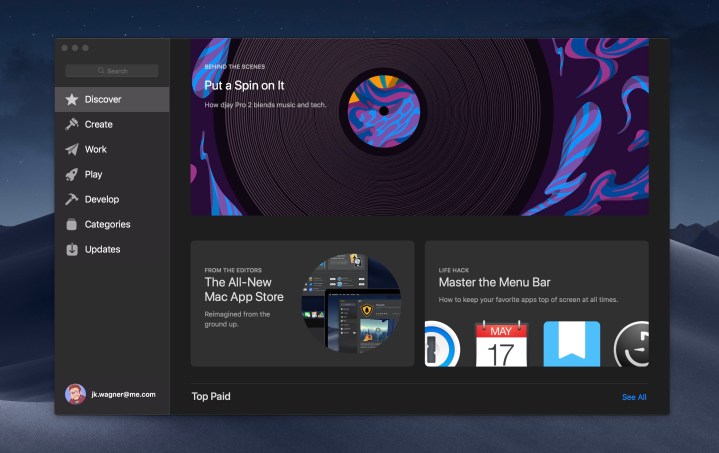
Every year, Apple pumps out new iPhones and iPads with complete control of nearly aspect of the devices. That’s not true of Macs. To Apple’s chagrin, they still rely heavily on Intel for its performance capabilities and release schedule.
Building the MacBook around a completely different silicon architecture — chips from ARM — would solve all that. The idea of ARM MacBooks has long been speculated, but outside of the rumors and reports, there was never any factual evidence that Apple had a secret plan to ditch Intel and AMD for good.
But with a careful look at the aims of Mac Catalyst, it seems like Apple has been building toward its ARM-based future right under our noses.
Pulling the puzzles apart
If a disruption to the Mac platform this large is coming, it can’t be pulled off overnight. Not only is development of ARM-based processors difficult, Apple would also quickly run into an app problem. No one wants a new Mac that can’t run the software and apps they already know and love. Microsoft has already demonstrated what a mess transitioning over to ARM can be without the proper app support. That’s a disaster Apple would want to avoid at all costs.
The solution? Well, outside of merging iOS and MacOS entirely, it’s to ensure these future ARM-based Macs have all the apps they need right in the Mac App Store. That’s where Catalyst comes into play.

Mac Catalyst is Apple’s project to let developers port iPad apps over to the Mac, first announced as part of MacOS Catalyst. Right now, Apple is actively courting developers to port their iPad apps across to the Mac with its dead-simple new process. The rumors suggest that iPhone apps are next, with the eventual goal that any app will work on any Apple platform.
At first glance, it’s a run-of-the-mill Apple plan to further strengthen and integrate its ecosystem. Not much to see here, right?
With Catalyst, the ARM MacBook could launch with a huge catalogue of apps available right in the Mac App Store.
But upon further inspection, Catalyst just might fit into a much larger strategy. What if, instead of being a limited-run project to improve cross-platform apps, it was just one spoke in a much larger wheel, the end goal of which is to totally transform the MacBook’s architecture and bring out an ARM-based Mac?
If Apple’s attempts prove successful, the ARM MacBook could launch with a huge catalogue of apps available right in the Mac App Store. More than that, they’re all the apps you already use on your other Apple products. The process is already underway. Apple has already ditched its most popular native desktop app, iTunes, only to replace it with three separate Catalyst apps.
Beyond Catalyst, Apple is even building new app solutions with this cross-platform strategy in mind. For example, take Apple Arcade, the company’s new games subscription service. One of the key features of the service is that all of its 100+ games will run on almost any Apple device — your iPhone, your iPad, your Mac, even your Apple TV.
That may not mean much on its own, but combined with Mac Catalyst functioning on the exact same principle, it starts to look an awful lot like Apple is preparing us for this to become the norm. We could look back in a few years’ time and realize that Mac Catalyst and Apple Arcade were the first steps in a sort of unified Apple app ecosystem — one that really only work with a shared ARM architecture.
It’ll all begin with the MacBook Air
So, Apple may well be using Mac Catalyst and Apple Arcade to prepare us for a future where apps work on any and all of Apple’s devices. So far so good. But where — and when — is this likely to become a reality?
The MacBook Air — or, potentially, a revived 12-inch MacBook — would make the most sense.
Not only is the dual-core performance easier to replicate on ARM, the applications needed aren’t nearly as complex. The MacBook Air is a device primarily for students and workers who spend most of their time on the web or in simple applications. The selection of Catalyst apps in the Mac App Store should do the trick.

And when will it come? Well, given the developer-focused nature of such an announcement, WWDC in June 2020 would make a lot of sense.
Think of it this way: who will benefit the most from Mac Catalyst? The answer, as Apple has routinely made clear, is developers. Apple has previously stated that Mac Catalyst means devs merely have to tick a checkbox while coding their app and the fundamental features of a Mac app — cursor control, Dock support, inability to play the latest games (maybe not that last one) — will be automatically built in. It’s a massive quality of life boost to the dev community.
Other than the soothing tones of a Jony Ive voiceover, there’s nothing Apple loves more than a big showy event, and now that Mr. Ive has left Apple and flown off to his mountain-top lair to contemplate the impermanent nature of glass, that leaves showstopper events as Tim Cook’s favorite guilty pleasure. And what better time to show off a new MacBook with an architecture designed to bring big benefits to developers than at Apple’s developer-centric event?

So yes, our prediction is that it’ll start with the lower-end MacBooks at WWDC 2020.
But that doesn’t mean it’ll stop there. It’s hard to imagine Apple bringing ARM chips to some Macs but not eventually to all. The switch from PowerPC to Intel wasn’t a half-hearted affair, after all. That suggests to us that Apple must be working on something powerful for its Pro models too.
Apple’s current Pro strategy doesn’t gel with that at the moment, though. The new Mac Pro has its eyes set squarely on performance above all else. Meanwhile, the all-new 16-inch MacBook Pro just launched, and it’s also focused entirely on pleasing its diehard pro demographic. The new cooling systems in these products seem specifically designed to handle powerful processors like Intel’s high-end Core i9 chips.
Apple’s ARM-based A-series chips are superb — but they can’t compete at this level quite yet. Apple will need to put in serious effort to convince pro users that they won’t lose anything by switching to ARM processors.
It’s a similar situation with applications. From Logic and Final Cut to Premiere and Lightroom, these are content creation tools that professionals rely on. Simple Catalyst apps as replacement won’t cut it. While we’re convinced Apple will eventually move its entire line over to ARM, it’ll need a comprehensive solution in the works that may not come as soon as 2020.
But either way, get ready for the world of the MacBook to be permanently shaken up. The ARM transition will herald a new era for the Mac, and it could be just around the corner.



